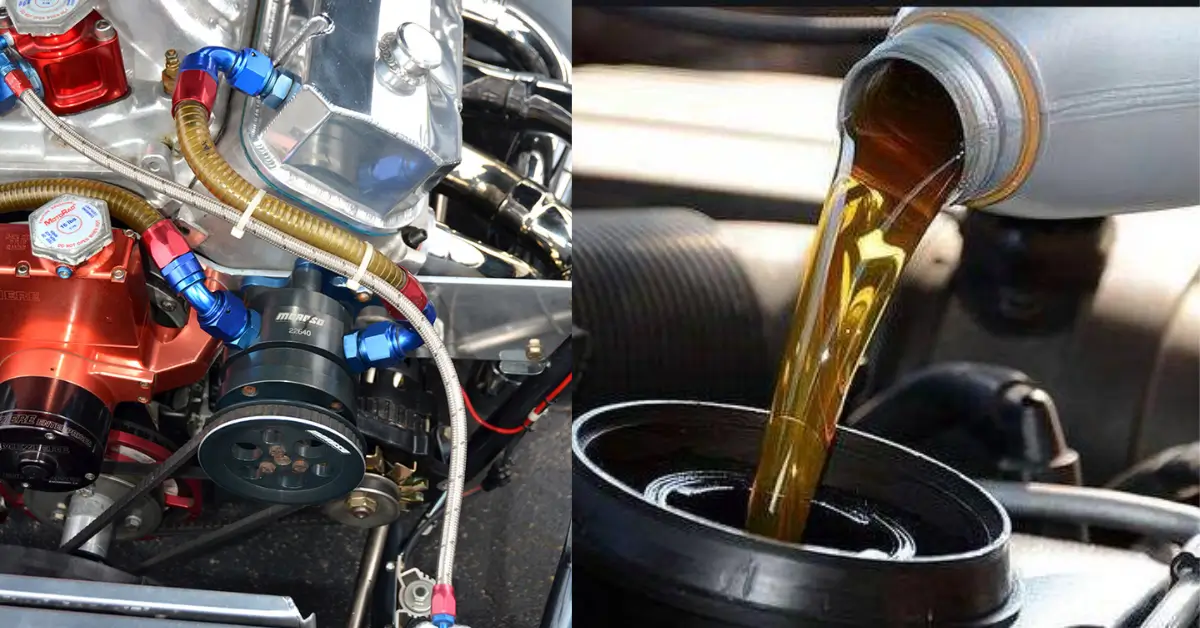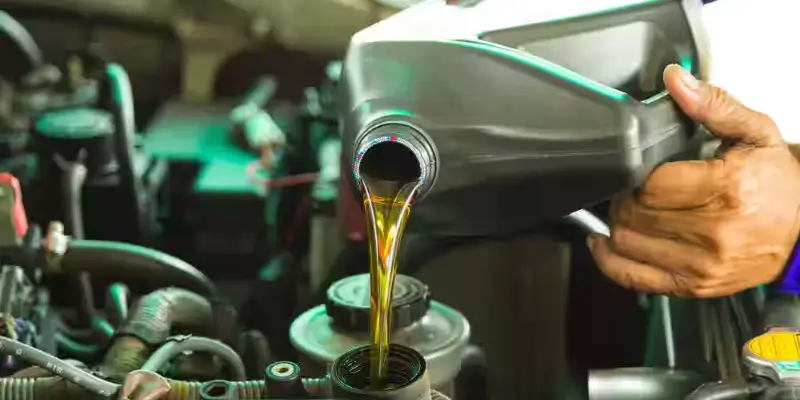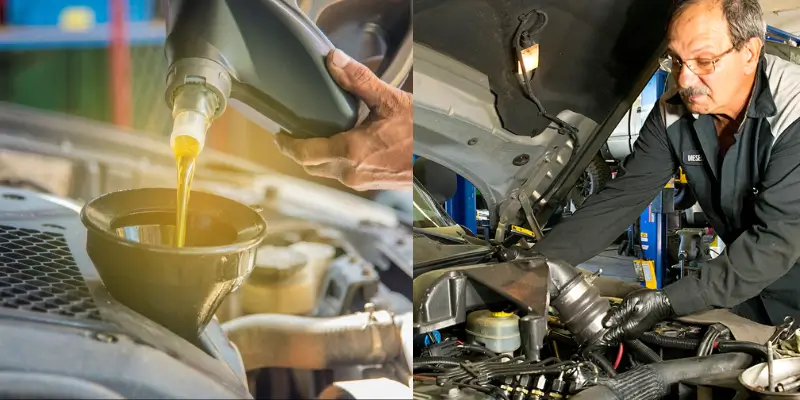Oil Vacuum Valve in Engine: Revolutionizing Modern Automotive Systems

The oil vacuum valve is a vital yet often overlooked component in modern automotive engines. Its primary purpose is to regulate oil flow, optimize engine performance, and ensure long-term reliability.
Whether you’re a car enthusiast or a mechanic, understanding how this component functions and contributes to an engine’s operation can elevate your knowledge and appreciation for modern engineering.
This article dives deep into the intricate workings of the oil vacuum valve, exploring its importance, functions, maintenance, and much more. With advancements in automotive technology, the oil vacuum valve has evolved, becoming an indispensable part of the engine’s ecosystem.
What is Oil Vacuum Valve in Engine?
An oil vacuum valve is a specialized component designed to regulate vacuum pressure and oil circulation within an engine. It is often integrated with systems like the Positive Crankcase Ventilation (PCV) system to maintain optimal pressure in the crankcase and ensure efficient lubrication.
By controlling oil flow and vacuum pressure, this valve prevents oil leaks, reduces harmful emissions, and supports engine seals. In essence, the oil vacuum valve ensures a harmonious balance between lubrication and vacuum dynamics, making it essential for smooth engine operation.

The Importance of Oil Vacuum Valves in Engine Operation
Oil vacuum valves play a crucial role in ensuring the longevity and efficiency of automotive engines. They regulate oil pressure and vacuum levels, minimizing the risks of excessive oil consumption or vacuum leaks.
These valves are particularly vital in turbocharged engines, where vacuum dynamics are more complex. By maintaining balance, the oil vacuum valve protects vital components, reduces wear and tear, and enhances the engine’s overall reliability.
Read Also: Grace Charis Net Worth
Key Functions of Oil Vacuum Valves in Modern Engines
The oil vacuum valve serves multiple functions that are critical to modern engine operation. It prevents oil from being drawn into the intake manifold, a common issue in older engines without advanced vacuum regulation.
Additionally, it supports oil vapor management by separating oil particles from blow-by gases. This contributes to reduced emissions and improved engine performance optimization, ensuring compliance with stringent environmental standards.
How an Oil Vacuum Valve Works in the Engine’s Lubrication System
The oil vacuum valve regulates the flow and pressure of oil within the lubrication system. It ensures that the right amount of oil reaches engine components like pistons, crankshafts, and camshafts.
By controlling oil pressure, the valve prevents over-lubrication or under-lubrication, both of which can cause severe engine damage. The result is a well-lubricated, smoothly running engine that operates at peak performance.
The Role of Oil Vacuum Valves in Crankcase Ventilation Systems
In crankcase ventilation systems like the Positive Crankcase Ventilation (PCV) system, the oil vacuum valve helps remove blow-by gases that escape from the combustion chamber. It prevents oil vapor from being sucked into the intake manifold while maintaining proper crankcase pressure.
This regulation not only improves fuel efficiency but also reduces oil sludge buildup, a common issue that can compromise engine health over time.
Integration of Oil Vacuum Valves in Turbocharged Engines
Turbocharged engines rely heavily on oil vacuum valves to manage the interplay between oil and vacuum dynamics. These valves ensure that oil does not enter the turbocharger’s intake system, which could lead to reduced performance or damage.
By maintaining the integrity of the turbocharger system, the oil vacuum valve enhances engine efficiency and power, allowing turbocharged vehicles to deliver peak performance.
Common Problems Associated with Oil Vacuum Valves
Despite their importance, oil vacuum valves can face several challenges. Clogging due to oil sludge or debris is a common issue that affects the valve’s efficiency.
Leaks in the valve or surrounding components can result in vacuum leaks in the engine, leading to poor performance and increased emissions. Regular maintenance is key to avoiding these problems.
Symptoms of a Failing Oil Vacuum Valve
A failing oil vacuum valve often exhibits noticeable symptoms, such as increased oil consumption, poor idling, or excessive exhaust smoke. Drivers may also notice reduced fuel efficiency and sluggish engine performance.
Addressing these issues promptly by diagnosing and repairing the valve can prevent further damage to the engine and related systems.
The Connection Between Oil Vacuum Valves and Emission Control
Oil vacuum valves contribute significantly to emission control by managing oil vapor and reducing blow-by gases. This prevents unburnt hydrocarbons from entering the atmosphere, ensuring compliance with emissions regulations.
By optimizing the combustion process, the valve helps vehicles achieve cleaner and more environmentally friendly operations.
Maintenance Tips to Prolong the Life of Oil Vacuum Valves
Proper maintenance is essential for the longevity of oil vacuum valves. Regular oil changes prevent sludge buildup, which is a leading cause of valve clogging.
Inspecting the PCV valve and related components during routine maintenance ensures that the entire system operates efficiently, reducing the likelihood of costly repairs.
How to Diagnose Oil Vacuum Valve Issues Effectively
Diagnosing oil vacuum valve problems involves checking for signs like oil leaks, poor engine performance, or unusual noises. Visual inspections and using diagnostic tools to measure vacuum pressure can pinpoint issues.
A malfunctioning valve should be replaced promptly to restore the engine’s optimal performance and avoid further complications.
The Impact of Oil Vacuum Valve Failures on Engine Performanc
When an oil vacuum valve fails, it can cause significant engine issues, including reduced efficiency, increased emissions, and potential damage to engine seals.
Ignoring these problems can lead to costly repairs and compromise the overall performance of the engine. Addressing valve failures quickly is crucial for maintaining vehicle reliability.
Steps to Replace a Faulty Oil Vacuum Valve
Replacing a faulty oil vacuum valve involves locating the valve, disconnecting the related components, and installing a new one. Proper tools and adherence to manufacturer guidelines are essential for a successful replacement.
Post-replacement testing ensures that the new valve functions correctly, restoring the engine to its optimal state.
Oil Vacuum Valves and Their Role in Reducing Harmful Emissions
By managing oil vapor and regulating blow-by gases, oil vacuum valves play a direct role in reducing harmful emissions. This makes them a critical component in modern automotive engines designed to meet environmental standards.
Their efficient operation supports cleaner air and sustainable vehicle performance, aligning with global efforts to reduce automotive pollution.
Benefits of Regular Inspection and Maintenance of Oil Vacuum Valves
Routine inspection and maintenance of oil vacuum valves can save drivers from costly repairs and ensure consistent engine performance. A well-maintained valve prevents issues like oil leaks and vacuum imbalances.
The benefits extend to improved fuel efficiency, reduced emissions, and prolonged engine life, making regular care a worthwhile investment.
The Evolution of Oil Vacuum Valve Technology in Automotive Engines
Over the years, oil vacuum valves have evolved from simple mechanical components to advanced systems integrated with engine management. Modern valves feature precision engineering and materials designed to withstand harsh conditions.
This evolution reflects the automotive industry’s focus on enhancing engine performance optimization and meeting stricter emissions standards.
The Role of Oil Vacuum Valves in Prolonging Engine Lifespan
By ensuring proper lubrication and vacuum balance, oil vacuum valves significantly contribute to an engine’s longevity. They protect critical components like pistons, crankshafts, and engine seals, reducing wear and tear.
A functional oil vacuum valve ensures that the engine operates smoothly, delivering reliable performance over its lifespan.

How Oil Vacuum Valves Enhance Turbocharged Engine Efficiency
Turbocharged engines demand precise control of oil and vacuum dynamics, a role perfectly suited for oil vacuum valves. These valves prevent oil from entering the intake system, preserving turbocharger efficiency.
As a result, turbocharged vehicles benefit from improved power delivery and fuel efficiency, thanks to the reliable performance of the oil vacuum valve.
Preventative Measures to Avoid Oil Vacuum Valve Problems
Preventing oil vacuum valve issues starts with regular maintenance, including timely oil changes and inspections. Using high-quality engine oil reduces the risk of sludge buildup, which can clog the valve.
Additionally, addressing minor valve issues promptly prevents them from escalating into more serious problems, ensuring long-term engine reliability.
Future Trends in Oil Vacuum Valve Technology
The future of oil vacuum valve technology lies in advanced materials and smart systems. Innovations like self-cleaning valves and sensors for real-time diagnostics are set to redefine valve efficiency.
As automotive technology evolves, oil vacuum valves will continue to play a pivotal role in enhancing engine performance and sustainability.
Read Also: 2010 GMC Terrain SLT-2 Cost to Replace CV Joint
Final Thoughts
The oil vacuum valve may be a small component, but its impact on engine performance and reliability is immense. From managing oil flow to reducing emissions, this valve ensures that modern engines meet the demands of efficiency and environmental responsibility.
By understanding its functions, maintaining it regularly, and addressing issues promptly, drivers can enjoy optimal engine performance and longevity.
FAQs
What does an oil vacuum valve do?
The oil vacuum valve regulates oil flow and vacuum pressure, ensuring efficient lubrication and optimal engine performance.
How do I know if my oil vacuum valve is faulty?
Symptoms include increased oil consumption, poor idling, and reduced fuel efficiency.
Can a failing oil vacuum valve damage the engine?
Yes, it can cause issues like oil leaks, excessive emissions, and potential damage to engine seals.
How often should I inspect the oil vacuum valve?
Regular inspections during routine engine maintenance are recommended to ensure optimal performance.
Q: Are oil vacuum valves used in all engines?
They are commonly used in modern engines, especially turbocharged systems, for enhanced efficiency and emissions control.


